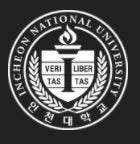Concrete Evidence: Cement-Based Energy Material for Building Net Zero Energy Structures
Engineers from South Korea developed cement-based composites with conductive fillers that generate and store electricity by contact electrification
Smart cities that champion sustainable, “net-zero” energy consumption are no longer an all-new concept. However, for the building sector, achieving this state seems plausible only in the distant future. Now, Incheon National University researchers have developed a novel cement-based composite that can generate and store energy induced via contact between materials. This material could be used to build buildings that can harvest energy from human motion in their floors and wind and raindrops hitting them.
From devices to home appliances and soon even entire cities, everything around us is getting smarter. The concept of a smart city, which involves energy-efficient ecosystems that can reduce carbon emissions, save energy, and provide better lives, are no longer a thing of the distant future. However, it’s worth noting that since the building sector alone is single-handedly responsible for 40% of the entire modern world’s power consumption, building need to be able to offset this energy consumption.
The solution to this problem may be closer than you might think. In a recent study published in Nano Energy, researchers from Incheon National University (INU), including Prof. Seung-Jung Lee, along with researchers from Kyung Hee University and Korea University, addressed this issue by developing an all-new structural material that can make construction more eco-friendly. The team developed a cement-based conductive composite (CBC) with carbon fibers that can also act as a triboelectric nanogenerator (TENG) — a type of mechanical energy harvester. This paper was available online on 3rd August 2021 and was published in Volume 89, Part A of the journal Nano Energy in November 2021.
“We wanted to develop a structural energy material that could be used to build net-zero energy structures (NZES) that use and produce their own electricity. Since cement is an indispensable construction material, we decided to use it with conductive fillers as the core conductive element for our CBC-TENG system,” explains Prof. Lee. The concrete exteriors of buildings are often exposed to external mechanical energy sources such as ocean waves, movement of objects, wind on the walls, and raindrops on the roofs. Cement-based TENGs can harvest energy from these sources via contact electrification — a process where electricity is generated as a result of interactions between two materials.
The team designed a lab-scale NZES and a CBC-based capacitor using the developed material to test its energy harvesting and storage abilities. The results indicated that at a 1% volume of conductive carbon fibers in a cement mixture, the CBC mixture exhibits optimal electrical properties while retaining the superior mechanical properties of cement. The researchers’ electrical measurements confirmed that CBC-TENG could be safely used as a building material as the current generated by it was much lower than the maximum allowable current for the human body.
Apart from energy storage and harvesting, the material could also be used to design self-sensing systems that monitor the structural health and predict the remaining service life of concrete structures without any external power. “Our ultimate goal was to develop materials that made the lives of people better and did not need any extra energy to save the planet. And we expect that the findings from this study can be used to expand the applicability of CBC as an all-in-one energy material for net-zero energy structures,” concludes Prof. Lee.
Seems like a jolting start to a brighter and greener tomorrow!
Reference
Authors: Yoonsang Ra (a), Ilhwan You (b,1), Minchang Kim (a), Sunmin Jang (a), Sumin Cho (a), Dongik Kam (a), Seung-Jung Lee (c,d*), Dongwhi Choi (a**)
Title of original paper: Toward smart net zero energy structures: Development of cement-based structural energy material for contact electrification driven energy harvesting and storage
Journal: Nano Energy
DOI: https://doi.org/10.1016/j.nanoen.2021.106389
Affiliations:
a. Department of Mechanical Engineering (Integrated Engineering Program), Kyung Hee University
b. School of Civil, Environmental and Architectural Engineering, Korea University
c. Advanced Railroad Civil Engineering Division, Korea Railroad Research Institute
d. Department of Civil and Environmental Engineering, Incheon National University
About Incheon National University
Incheon National University (INU) is a comprehensive, student-focused university. It was founded in 1979 and given university status in 1988. One of the largest universities in South Korea, it houses nearly 14,000 students and 500 faculty members. In 2010, INU merged with Incheon City College to expand capacity and open more curricula. With its commitment to academic excellence and an unrelenting devotion to innovative research, INU offers its students real-world internship experiences. INU not only focuses on studying and learning but also strives to provide a supportive environment for students to follow their passion, grow, and, as their slogan says, be INspired.
Website: http://www.inu.ac.kr/mbshome/mbs/inuengl/index.html
About the author
Prof. Seung-Jung Lee received his Ph.D. from Korea University, South Korea in 2014. He was a senior researcher at Korea Railroad Research Institute from 2015 to 2021 and is currently a professor at the Incheon National University’s Department of Civil and Environmental Engineering. His current research interests include the development of self-sensing concrete technology using conductive nanomaterials i.e., cement-based composite with conductive fillers. His other areas of interest include studying deterministic and probabilistic failure prediction of solids and structures such as bridges, railway structures, and stretchable electronics.
